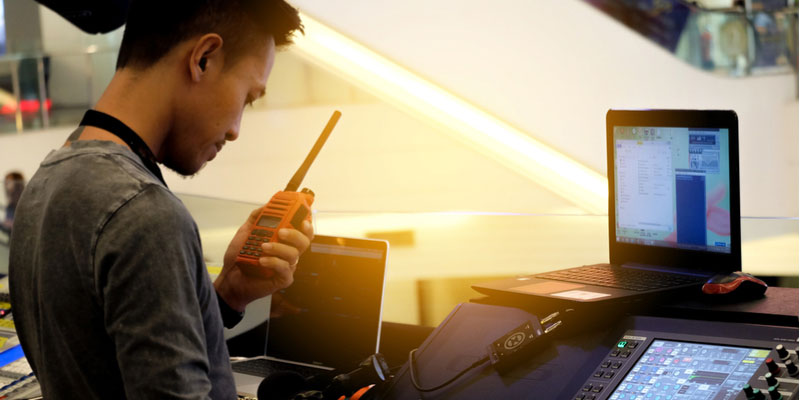The job of a Distributed Antenna System (DAS) is to improve wireless signals in an indoor or outdoor space, essentially anywhere with an obstructed signal. Some of the most common issues related to designing a DAS include budget and time restraints, the inability to remove certain interferences, and planning for future expansion—just to name a few.
Solutions to 4 Common DAS Design Challenges
There is no one-size-fits-all solution for DAS. Buildings and venues are unique in many ways, and therefore, the appropriate system must be custom made to fit the needs of each space. The following challenges are commonly faced during the design phase. Luckily, there are solutions to help work around each issue.
DAS Challenge #1: Budget & Time Restraints
There are a variety of factors that influence the cost and time frame it takes to develop a DAS. For instance, what frequency range does the system require—Very High Frequency (VHF), Ultra High Frequency (UHF), or 700 to 800 MHz public safety? The latter is the easiest and most cost effective to construct, while VHF and UHF are costlier and more complex. No matter what, it takes time and money to install custom cabling, fiber optics, and other equipment.
The best solution is to plan for costs ahead of time by getting a free upfront quote from Highland Wireless. We offer free pre-testing of signal strength levels and a site survey. Even if your building is in pre-construction, we still offer a quote based on floor plans. Contact us today to learn more.
DAS Challenge #2: Near-Far
The near-far issue relates to a device that is operating on the DAS coverage zone, while it is serviced by a microcell tower that is not nearby. As a result, the DAS is affected because it must work overtime to transport data as the mobile device communicates with the macro network. Therefore, this creates interferences and performance issues with the DAS.
The solution is to design the DAS with this in mind, taking into consideration how much macro signal bleeding occurs in a building or at a venue. Then, create a DAS signal that is powerful enough to keep the mobile device operating on the DAS as opposed to switching back and forth between the macro system and the DAS.
DAS Challenge #3: Inability to Remove Certain Interferences
During the DAS design phase, all potential interferences must be identified and addressed. These interferences may include surrounding buildings, noise, fortified construction, and so forth. When possible, some interferences can be removed, but most of the time, the goal is to work around interferences. After all, realistically, not all interferences can be removed.
The practical solution to the problem is to detect all causes of interference. If a certain source cannot be removed or identified, the use of automatic detection and mitigation helps ensure the effectiveness of the DAS.
DAS Challenge #4: Looking Towards the Future
As technology continues to evolve and the use of mobile data increases, it’s important to look towards the future when designing a DAS so that it remains efficient over the long haul. One way to ensure this happens is to share the roadmap for growth with the designer and engineer of the DAS. This may include plans to expand, obtain more traffic flow, or increase current subscriber data. It is crucial to take the right steps towards ensuring future traffic and wireless network demands can be met by the system.
Learn more about our advanced DAS Design and Engineering services

